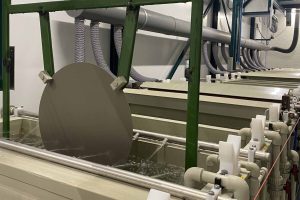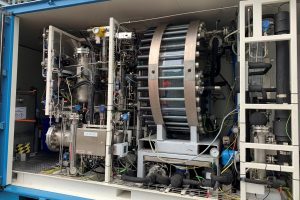Solid oxide electrolyser (SOE) technology is significant for its potential to efficiently produce hydrogen by using high-temperature electrolysis of steam. This process operates at temperatures typically between 700°C and 1,000°C, which allows the electrolyser to leverage thermal energy, often sourced from industrial waste heat or renewable energy, to split water molecules into hydrogen and oxygen. One of the key advantages of SOE technology is its reliance on readily available materials, such as ceramics, for the construction of its cells, avoiding the need for rare or expensive metals typically used in other electrolyser technologies such as PEM electrolysers. This makes SOEs not only more cost-effective but also more sustainable and scalable for large-scale hydrogen production.






